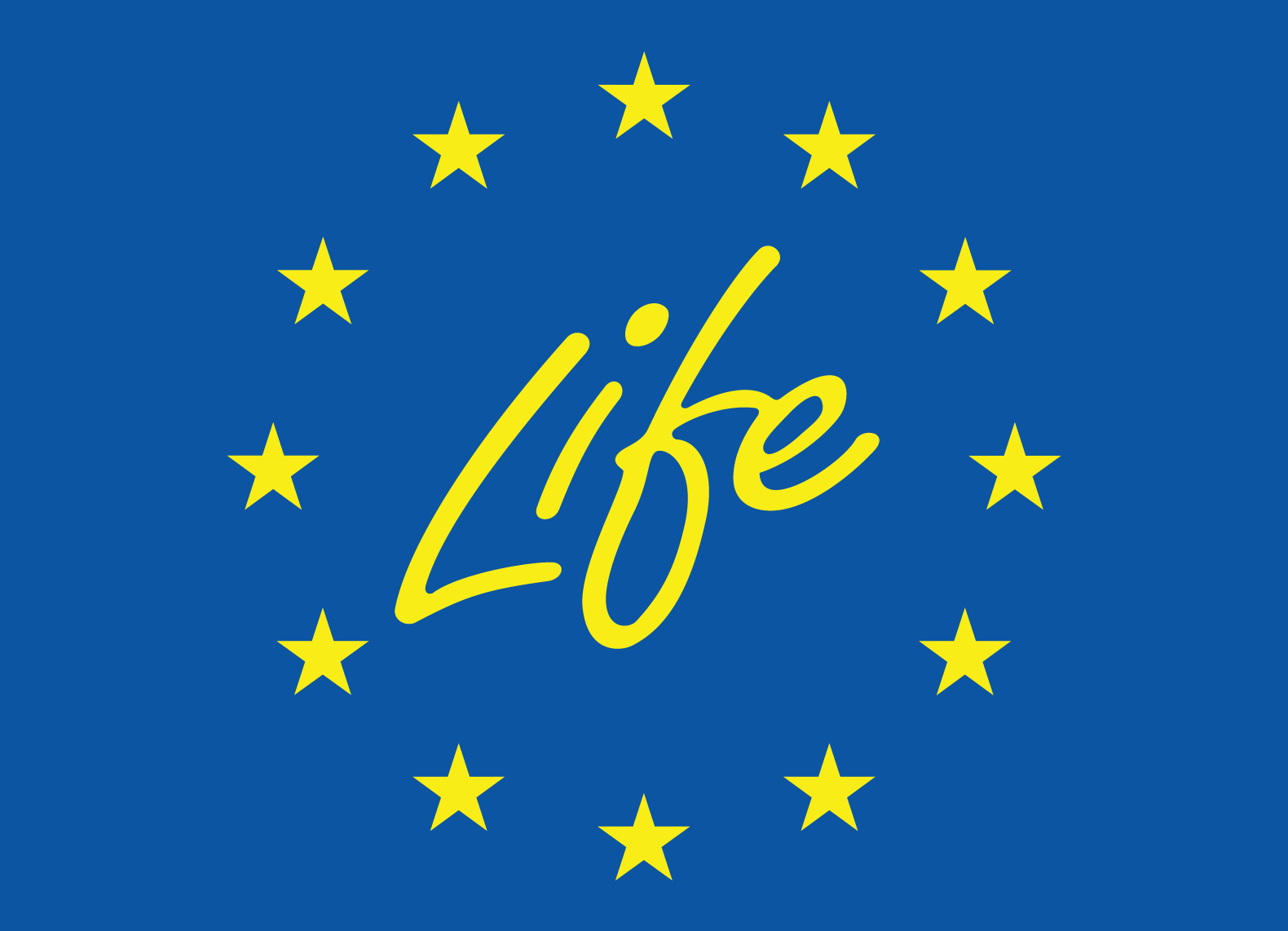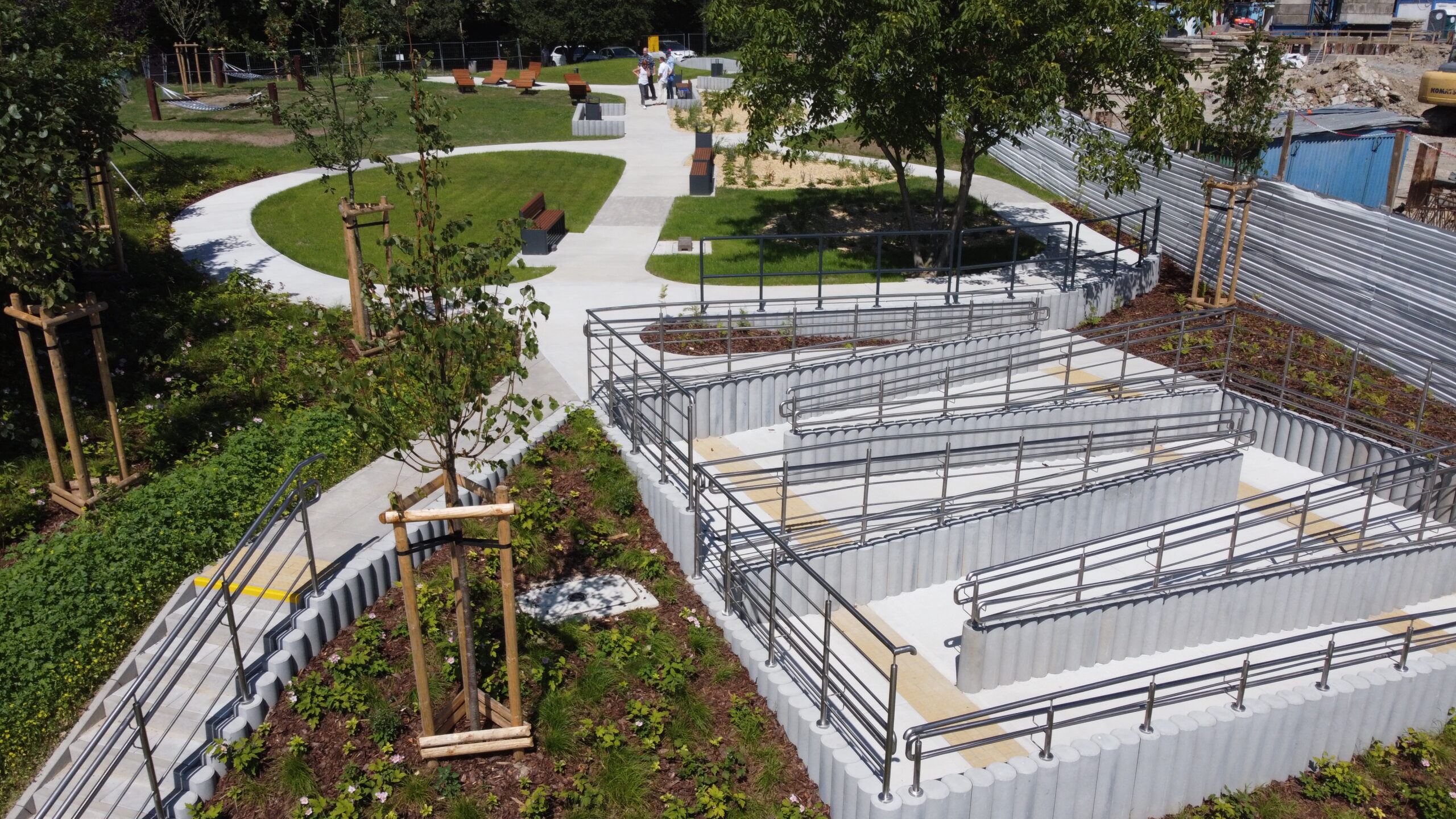
Completed investment at Wincentego Witosa Street
The investment at Wincentego Witosa Street in Krakow, as part of LIFE PACT, confirmed that green infrastructure can effectively integrate retention, recreational and social functions in urban areas with high traffic intensity. The project showed that even in difficult spatial conditions – with existing underground infrastructure, heavy pedestrian and vehicle traffic, and limited space – it is possible to implement nature-based solutions in an aesthetic and functional way.
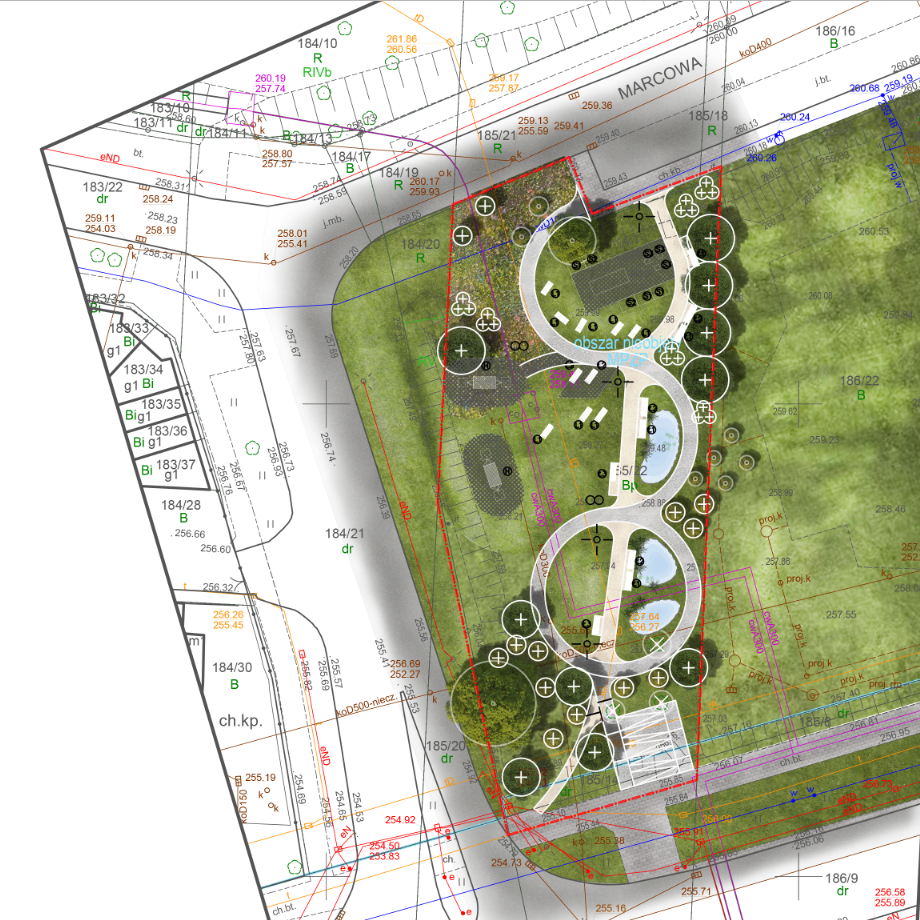
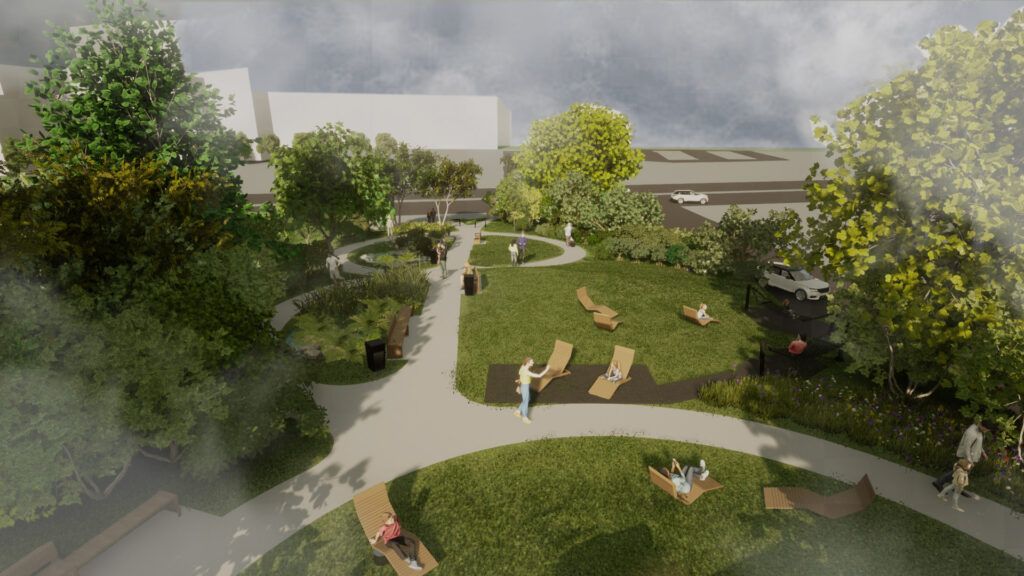
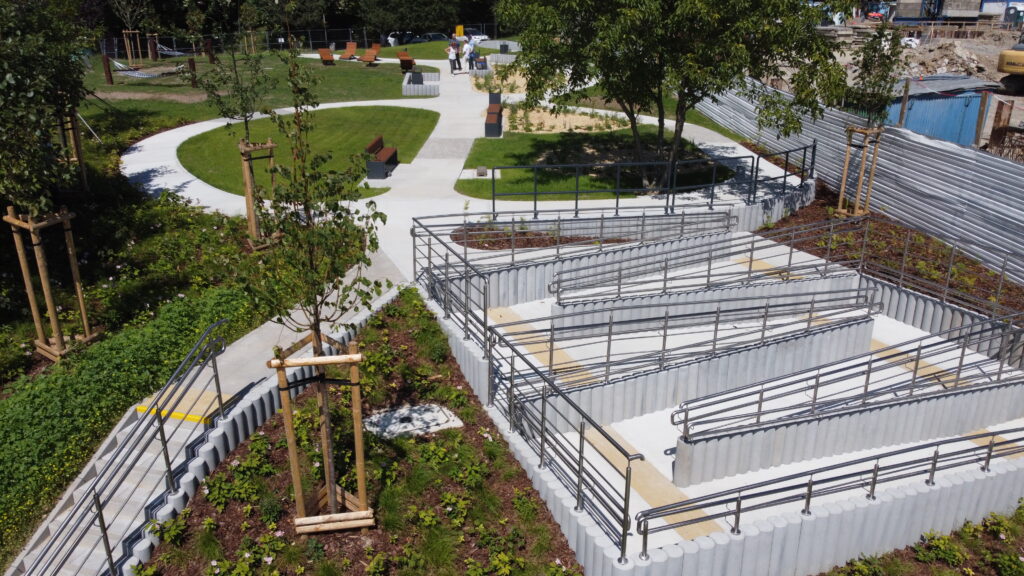
Extensive community participation proved to be a key element of success, enabling solutions to be tailored to the needs of residents, including the elderly and people with limited mobility. Joint workshops made it possible to design a space that is diverse in terms of use, integrating leisure areas (benches, deckchairs, hammocks) with communication and educational functions, while maintaining the accessibility standards of the City of Krakow.
The solutions used, such as rain gardens, infiltration basins and permeable surfaces, effectively reduce surface runoff of rainwater, increasing local retention and improving the microclimate conditions of the area. Diverse plantings of trees, shrubs and perennials from species resistant to urban conditions have increased biodiversity and created a space friendly to residents and pollinating insects.
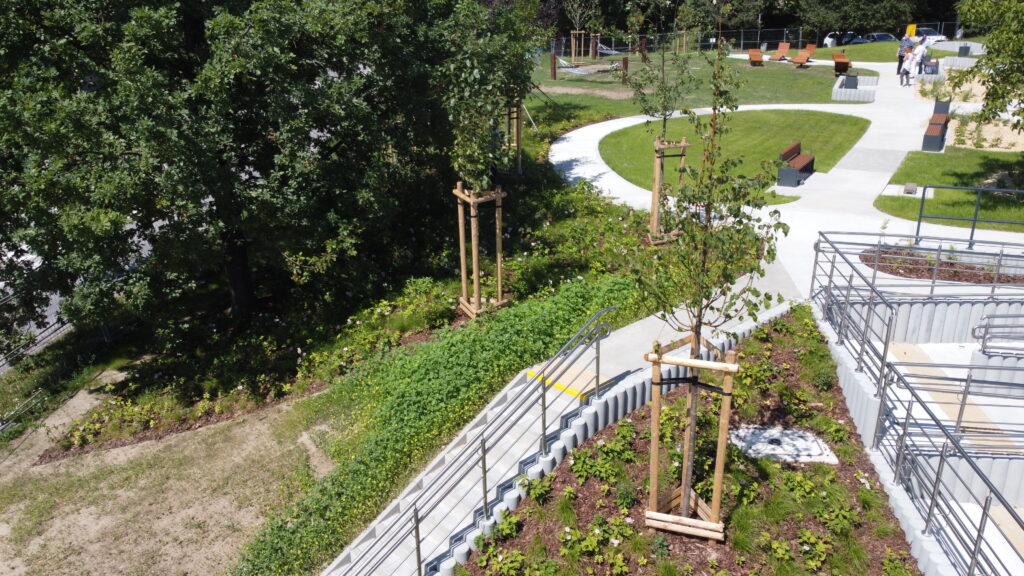
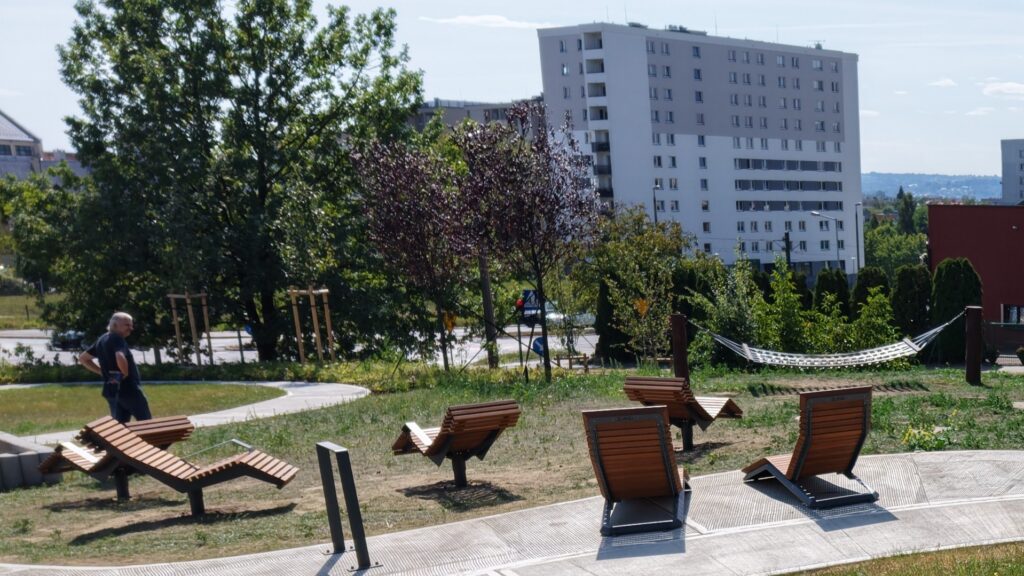
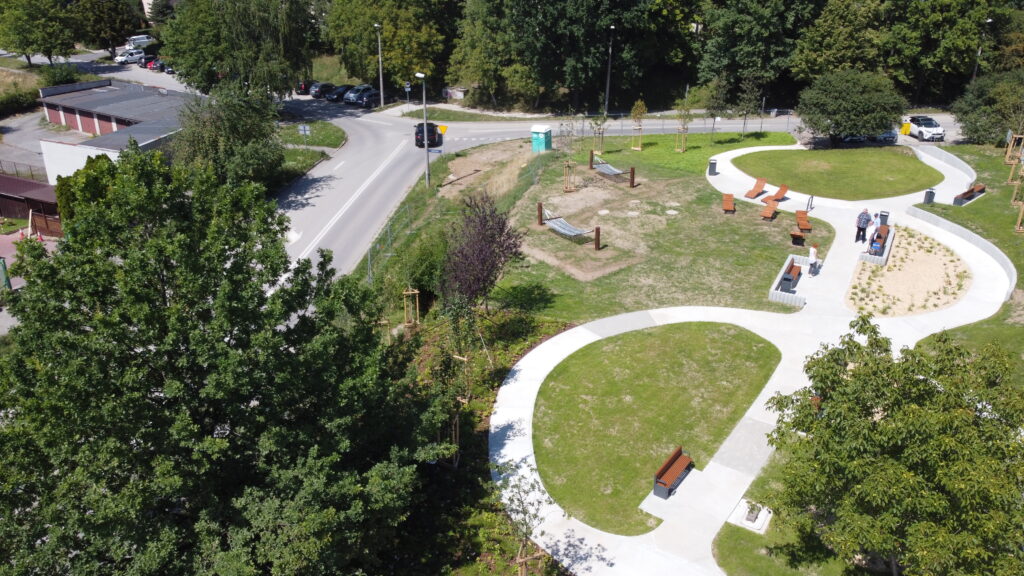
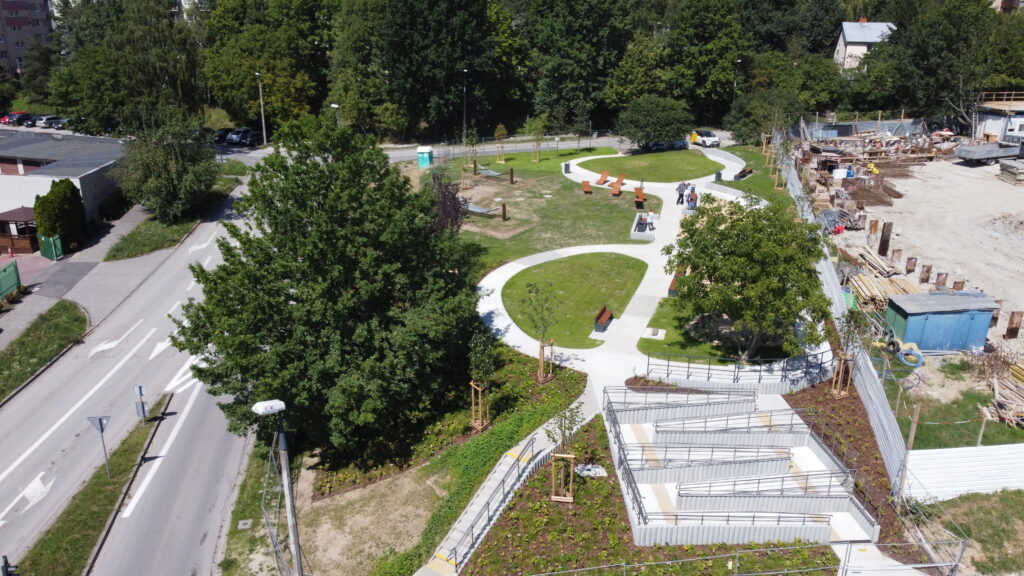
The investment demonstrated that an iterative design process and a willingness to adapt solutions during implementation (e.g. in terms of surfaces or pedestrian routes) are crucial when working in an existing, densely built-up urban fabric. The challenge was to coordinate work involving numerous underground network collisions, adapt the infrastructure to high accessibility standards, and reconcile the expectations of different user groups while maintaining retention functions.
The project also confirmed that maintaining the sustainability of investment effects requires clear assignment of responsibility for the maintenance of greenery and infrastructure elements from the moment of completion, and monitoring of operation and technical parameters allows for the assessment of the effectiveness of the solutions applied and their possible correction.
The developed land use model, based on a multifunctional approach and the use of nature-based solutions, is easily replicable in other locations in Krakow and cities with a similar urban structure, provided that key principles are observed: early community involvement, close cooperation between municipal entities, and flexibility in design and implementation.
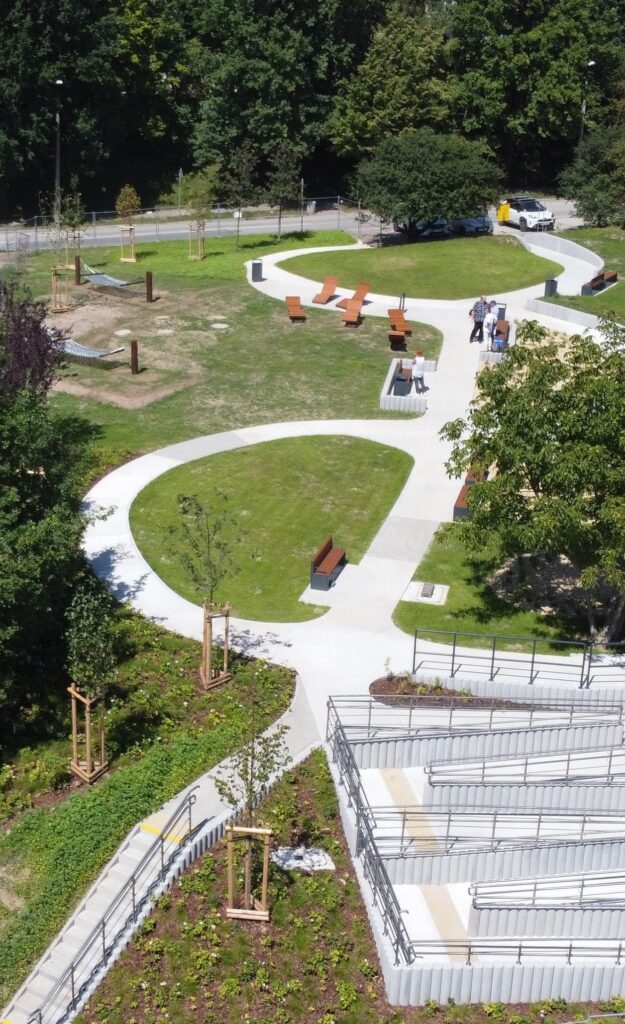
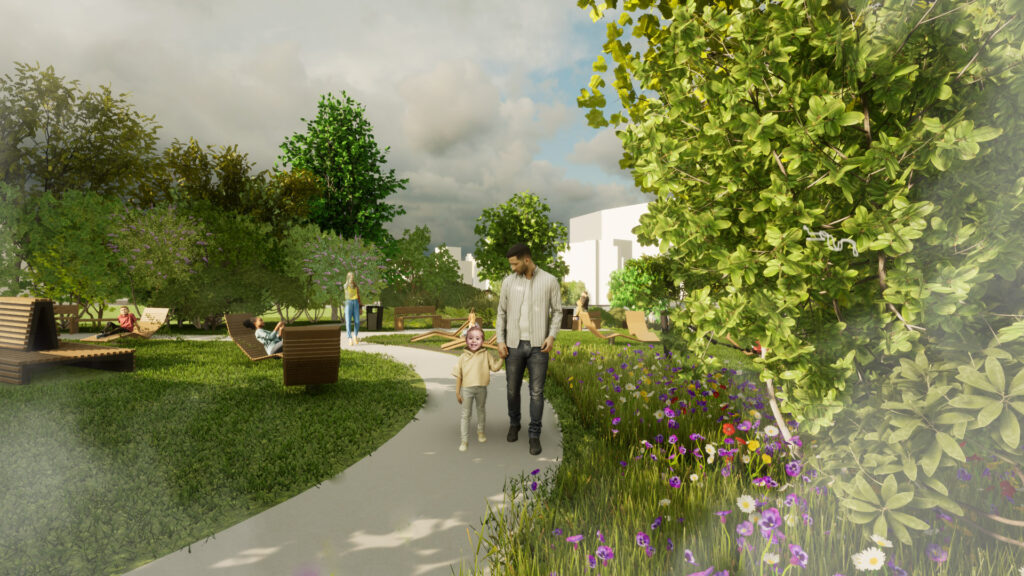

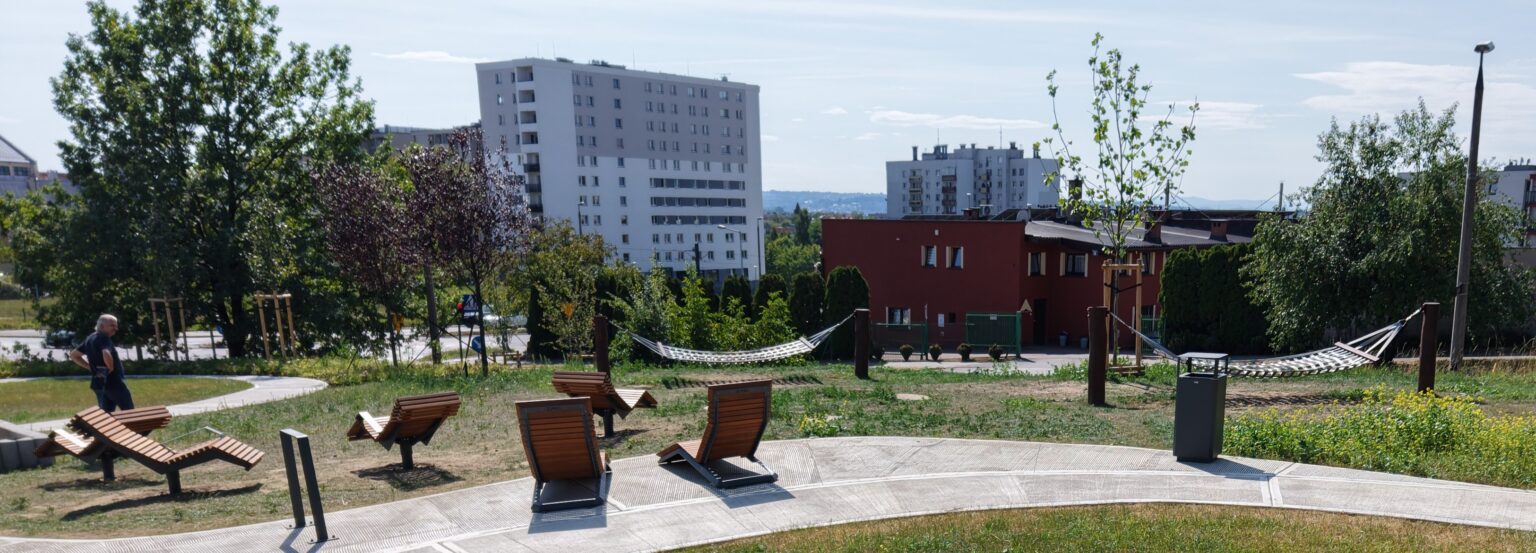
The investment on Witosa Street is an example of effective adaptation of the city to climate change, integrating retention, accessibility and social functions, and confirms the role of green infrastructure in building resilient and friendly public spaces in Krakow.
The implementation of the investment at Witosa Street shows that by combining rainwater retention, high-quality public space and resident involvement, it is possible to create resilient parts of the city even in complex spatial conditions. The project proved that nature-based solutions can be successfully implemented in degraded and neglected areas, transforming them into attractive places for everyday recreation, improving the microclimate and enhancing the quality of life of the local community.
An important aspect of the investment was to ensure full accessibility of the space for all users, while maintaining high aesthetic and functional standards. The design took into account the needs of the elderly, families with children and people with disabilities by appropriately shaping the surface, installing contrasting markings and using user-friendly small architectural elements.
The technical solutions used, such as rain gardens, infiltration basins and permeable surfaces, have reduced surface runoff of rainwater, increasing local retention and protecting infrastructure from the effects of heavy rainfall, which translates into a reduced risk of flooding. In addition, diverse plantings have increased the biodiversity of the area and created favourable conditions for pollinating insects and birds.
The investment process required flexibility and close coordination between municipal units and contractors, which allowed the work schedule and adopted solutions to be adapted to the terrain conditions and emerging user needs. Emerging challenges related to collisions of underground technical networks, the selection of appropriate surfaces, and reconciling the different expectations of residents were resolved thanks to an iterative design approach and ongoing communication with stakeholders.
The project proved that maintaining the long-term sustainability of investment effects requires a clear division of responsibility for the maintenance of green areas and infrastructure already at the stage of completion, as well as monitoring how the space is used. This approach allows for the assessment of the effectiveness of the solutions applied and the introduction of corrections where necessary, which is the basis for the long-term effectiveness of the investment.
The model for public space management developed in the LIFE PACT project can be successfully replicated in other parts of Krakow and cities with similar building density, provided that active community participation, close cooperation between municipal units and design flexibility are ensured in subsequent cycles of implementing nature-based solutions.
It is recommended to continue educational and informational activities that increase residents' environmental awareness and to apply the ‘Review, Reflect, Refine’ approach, which enables the ongoing improvement of adopted solutions and the adaptation of spaces to changing social and climatic needs.
The investment on Witosa Street is a prime example of combining adaptation to climate change with improving the quality of public space, social participation and increasing the city's resilience in a sustainable and aesthetic manner. The solutions implemented can serve as a reference point for further adaptation measures in Krakow and other cities interested in implementing nature-based solutions in a participatory, effective and socially acceptable manner.
